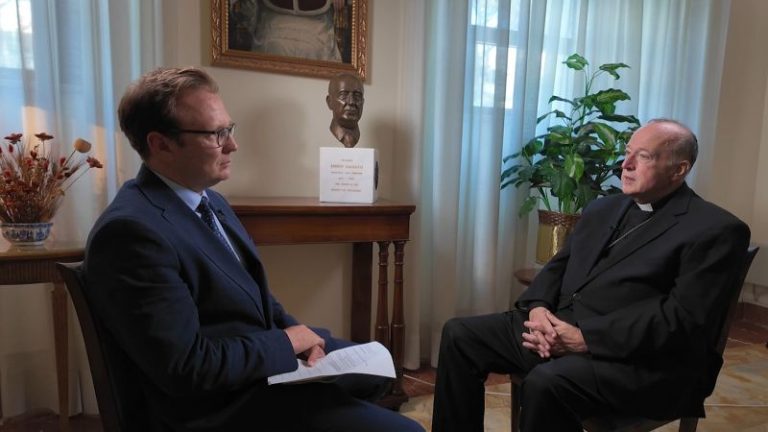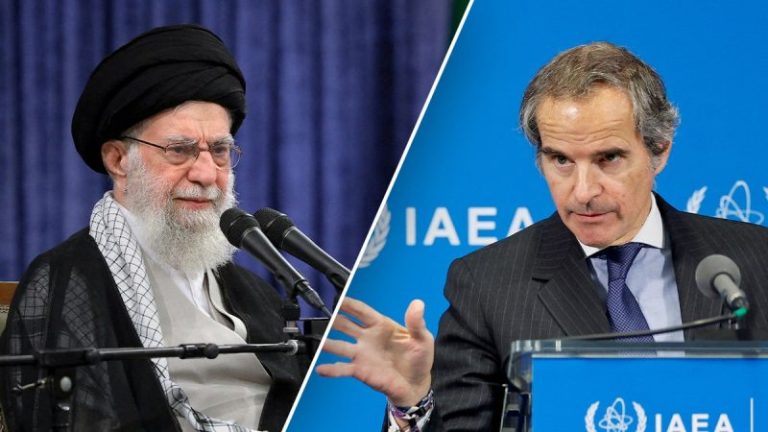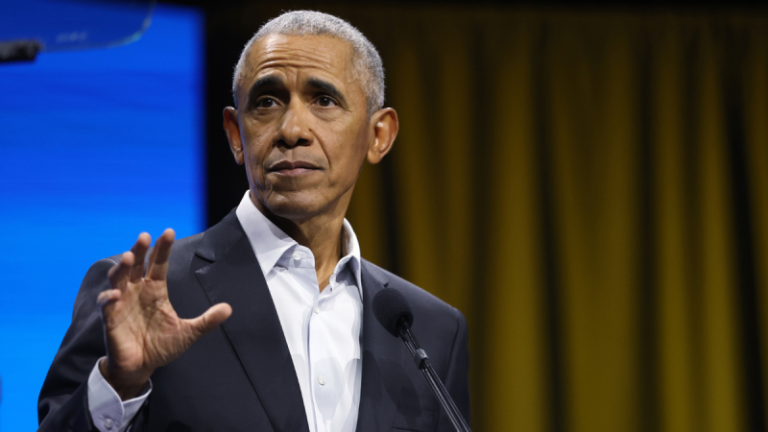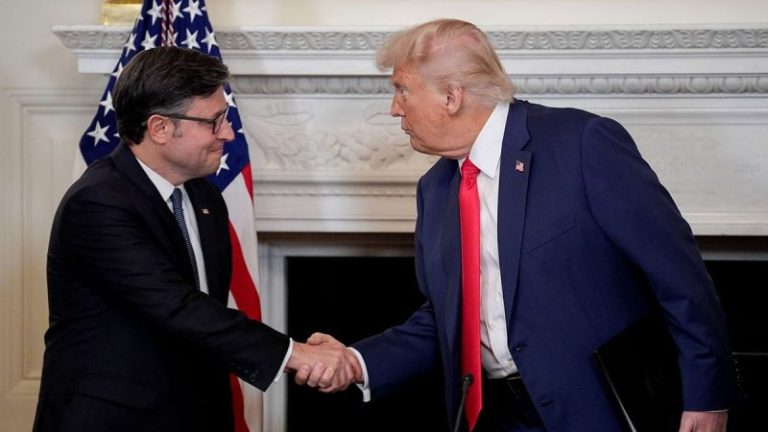The House of Representatives has voted to advance President Donald Trump’s $3.3 trillion ‘big, beautiful bill’ to its final phase in Congress, overcoming fears of a potential Republican mutiny.
It’s a significant victory for House Speaker Mike Johnson, R-La., though the fight is not over yet.
Lawmakers voted to proceed with debate on the mammoth-sized Trump agenda bill in the early hours of Thursday – a mechanism known as a ‘rule vote’ – teeing up a final House-wide vote sometime later Thursday morning.
The House adopted the rules for debate on the measure in a dramatic 219 to 213 vote – with all but moderate Rep. Brian Fitzpatrick, R-Pa., voting to proceed.
The vote had been stalled for hours, since Wednesday afternoon, with five House Republicans poised to kill the measure before lawmakers could weigh the bill itself.
Several members of the conservative House Freedom Caucus and their allies, meanwhile, appeared ready to skip the vote altogether in protest of GOP leaders’ compromise bill.
But both Johnson and Trump spent hours negotiating with holdouts, apparently to some success.
But the process could still take hours. Democrats could still call up various procedural votes to delay the final measure, as they did when the legislation passed the House by just one vote for the first time in late May.
Plus, the bill itself could still face opposition from both moderates and conservative Republicans.
Conservative lawmakers were threatening to derail the rule vote as recently as Wednesday over changes the Senate made to the legislation, which fiscal hawks argued would add billions of dollars to the federal deficit.
But those concerns appear to have been outweighed by pressure from House GOP leaders and the president himself – who urged House Republicans to coalesce around the bill.
The Senate passed its version of the bill late on Tuesday morning, making modifications to the House’s provisions on Medicaid cost-sharing with states, some tax measures, and raising the debt ceiling.
Moderates are wary of Senate measures that would shift more Medicaid costs to states that expanded their programs under Obamacare, while conservatives have said those cuts are not enough to offset the additional spending in other parts of the bill.
Two members of the conservative House Freedom Caucus who also sit on the House Rules Committee, Reps. Ralph Norman, R-S.C., and Chip Roy, R-Texas, voted against the measure during the Rules Committee’s 12-hour hearing to consider the bill.
Johnson himself publicly urged the Senate to change as little as possible in the run-up to the vote. But the upper chamber’s bill ultimately passed by a similarly narrow margin as the House – with Vice President JD Vance casting the tie-breaking vote.
‘I’m not happy with what the Senate did to our product,’ Johnson told reporters late on Tuesday afternoon. ‘We understand this is a process that goes back and forth, and we’ll be working to get all of our members to yes.’
But Trump took to Truth Social after the Senate passed the bill to urge House Republicans to do the same.
‘It is no longer a ‘House Bill’ or a ‘Senate Bill’. It is everyone’s Bill. There is so much to be proud of, and EVERYONE got a major Policy WIN — But, the Biggest Winner of them all will be the American People, who will have Permanently Lower Taxes, Higher Wages and Take Home Pay, Secure Borders, and a Stronger and More Powerful Military,’ the president posted.
‘We can have all of this right now, but only if the House GOP UNITES, ignores its occasional ‘GRANDSTANDERS (You know who you are!), and does the right thing, which is sending this Bill to my desk. We are on schedule — Let’s keep it going, and be done before you and your family go on a July 4thvacation. The American People need and deserve it. They sent us here to, GET IT DONE.’
Both the House and Senate have been dealing with razor-thin GOP majorities of just three votes each.
The bill would permanently extend the income tax brackets lowered by Trump’s 2017 Tax Cuts and Jobs Act (TCJA), while temporarily adding new tax deductions to eliminate duties on tipped and overtime wages up to certain caps.
It also includes a new tax deduction for people aged 65 and over.
The legislation also rolls back green energy tax credits implemented under former President Joe Biden’s Inflation Reduction Act, which Trump and his allies have attacked as ‘the Green New Scam.’
The bill would also surge money toward the national defense, and to Immigrations and Customs Enforcement (ICE) in the name of Trump’s crackdown on illegal immigrants in the U.S.
The bill would also raise the debt limit by $5 trillion in order to avoid a potentially economically devastating credit default sometime this summer, if the U.S. runs out of cash to pay its obligations.
New and expanded work requirements would be implemented for Medicaid and federal food assistance, respectively.
Democrats have blasted the bill as a tax giveaway to the wealthy while cutting federal benefits for working-class Americans.
But Republicans have said their tax provisions are targeted toward the working and middle classes – citing measures eliminating taxes on tipped and overtime wages – while arguing they were reforming federal welfare programs to work better for those who truly need them.
Progressive Rep. Maxwell Frost, D-Fla., told reporters it was Democrats’ intent to delay proceedings on Wednesday for as long as possible.
‘This last go around, we were able to delay the bill upwards of 30 hours. And so we’re going to do the same thing, do everything we can from a procedural point of view to delay this,’ Frost said.
Meanwhile, there were earlier concerns about if weather delays in Washington could delay lawmakers from getting to Capitol Hill in time for the planned vote.
‘We’re monitoring the weather closely,’ Johnson told reporters. ‘There’s a lot of delays right now.’
Fox News’ Dan Scully contributed to this report.
This post appeared first on FOX NEWS










